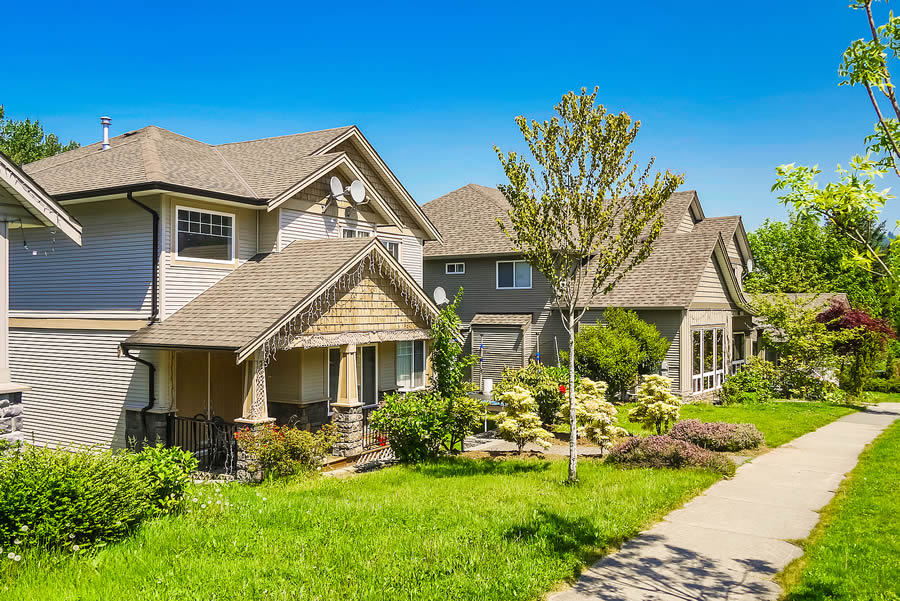Leasing Agent:
Depending on role assignments, some of the leasing agents' duties are the same or similar to those of the property manager. These duties apply during a rental property vacancy or in the final month or two before a tenant vacates. In our model, the property manager also performs these functions also:
- The market assigned properties for rent.
- Make presentations to prospective property owners. (Some companies actually have a dedicated position that is solely responsible for delivering listing presentations to prospective owners. This could be the closer or leasing agent supervisor.)
- Prepare management agreements.
- Prepare lease agreements.
- Interview and qualify tenant prospects.
- Show available properties to prospective tenants.
Maintenance Manager/Coordinator:
This person handles the coordination of service requests for managed properties. In our model, we have a separate staff person to handle this principally, but our property managers also actively participate in these functions because they need to be aware of these things so they can keep the landlord apprised and discuss solutions:
- Receive and file service requests.
- Coordinate work on managed properties between owners and vendors.
- Communicate work order status with the associated property manager.
- Ensure work orders are processed, and when work is completed, that the invoices are timely paid by bookkeeping.
- Keep track of the workman’s compensation and general liability policy status of vendors hired by the management company.
- Maintain records of trade licenses for hired contractors.
- Maintain records of business licenses for hired vendors.
Property managers with a broad skill set can handle solo up to as many as 100 properties as long as the properties are in close physical proximity to one another. This works for us because our agents ideally manage property within about a 20-minute drive of their personal home. This way, they can be most responsive to issues involving their properties.
Under the departmental model, each distinct function in the property management business has a department dedicated to serving that function. Diagram 1 depicts a basic departmental organizational structure. Note that this is a very flat, horizontal structure with little delegation of supervisory responsibilities. In this instance, all employees report directly to the company owner. In such organizations there can be as many property managers as the company owner deems necessary, and the same is true for the leasing agents.
Most experts on organizational theory tell us that three or four direct subordinates is the most that supervisors can reasonably expect to manage. In the model depicted in Diagram 1, there are eight people reporting directly to the company owner. It might be hard for this owner to properly supervise that many people. If this company grows, it will continue to weaken the owner’s ability to lead and manage.

Diagram 1
Basic Departmental Organizational Structure
This example is just one of the possibilities for organizing under the departmental organization model. Regardless of how this is done, there are some distinct disadvantages that will derive from virtually any departmental alignment:
- Lots of specific training must be conducted. This can be expensive and time consuming. Therefore, it oftentimes doesn’t happen. So the employees learn on the job and at the expense of the client landlord.
- Frequent staff meetings are essential to coordinate task handover between departments. Staff meetings are time consuming and really not very effective.
- There can be confusion on the part of both tenants and landlords when trying to resolve problems because the solutions may require working with multiple people on the staff, and with people with whom they have not become acquainted. It can also be difficult to find the right person that has the necessary knowledge and authority to solve the problem. Staff workers are rarely empowered with the authority to make important decisions.
- Because the staff are employees, paid by salary, they can tend to be less helpful when dealing with tenant or property owner complaints. They will get paid whether a complaint is resolved satisfactorily or not. It’s just a job. When the phone rings nobody wants to answer it. They see it as work.
In contrast, take a look at our portfolio model depicted in Diagram 2. In our organization, reception and bookkeeping would be roles very similar to the departmental organization but the property managers are entirely different. First of all, ours are paid purely on commission tied to their individual productivity. But perhaps more importantly each property manager performs all related tasks for each property in their portfolio except that they are supported by bookkeeping and a maintenance coordinator. They don’t have to keep the books! That’s particularly important because the aptitude and temperament of these property managers usually doesn’t favor bookkeeping. Each of our property managers handles their portfolio somewhat like a separate business entity. They feel individually responsible for the contentment of their client and customer bases and take pride in watching their own portfolios grow and succeed. They are able to definitively measure the fruits of their own labor.
We have two principals in our company (Dan and Terri). They share leadership duties. Terri serves as our general manager as depicted in Diagram 2. Dan serves in the role labeled Company Owner. Terri oversees the operations side of the business. Office manager duties are actually performed by KC, who also serves as our principal bookkeeper. Dan collaborates with Terri and KC to achieve maximum efficiencies in operations. This structure frees Dan from day-to-day operating issues and allows him to work on other aspects of the business. Dan is able to work on things like business networking, training the agents, and developing marketing systems to enhance the company’s overall performance. Dan focuses on working on the business, while Terri focuses inward—working in the business. It’s a great combination that has yielded great results.

Diagram 2
There are distinct advantages for the portfolio organizational structure. Probably the biggest advantage is that because the agents manage virtually all aspects of their assigned portfolios, communications between the company and the property owner is vastly enhanced. The same is true for the tenant relationship. Here are some other advantages:
- If the tenant and property owner relationship is valued by the company, then this model is the only way to go. In our case, our agents are also licensed agents that do sales. For them, building and maintaining good relationships with property owners and tenants is an effective way to bolster their referral base. Not only do these customers and clients become prospective buyers and sellers. they also have friends and family that may need real estate services. This system opens doors to potential business with an expanded referral base.
- The staff is not inundated with phone and email inquiries by tenants and property owners because most of the calls go directly to the respective property manager. This is where the calls should be going, since the property manager knows the details of the landlords’ asset and have been empowered to make decisions. Because our property managers are on commission they welcome phone calls. It’s a way to connect with people.
- There are fewer complaints by property owners and tenants because the property managers have a vested interest in the relationship. In fact, precisely because of our model, our property managers cannot afford to do a bad job. Relationships are the key to their success. Work for our property managers is not receiving phone calls as it is for the departmental company staff. Rather, it’s sustaining relationships. This attitude translates to good customer service.
There is another aspect of our model that separates us from the pack. It has to do with business mindset. In business there are two basic mindsets:
- Those that base the bulk of their business decisions on how to improve the bottom line and
- Those that are more interested in building relationships.
Relationship thinkers believe that if they take care of people, the bottom line will take care of itself. The bottom liner focuses on company profits and makes policy to support that even at the expense of creating an unhappy workforce. The bottom line thinker is more inclined to choose the departmental organizational structure, while the portfolio thinker tends to be more of a relationships person. The owners of 3 Options Realty have a relationship mindset. We care about not only the clients and customers but also our staff.
Another critical organizational difference between 3 Options Realty and many other companies is that we place ourselves between the public and the landlord. We become an obstacle through which the public must navigate before getting to the landlord. We believe that, compared to the property owner, we have the experience to better deal with any adversity that may arise. That’s why we put our company name on the lease as landlord. Service of process in such case will be delivered to our company.
Many companies want to avoid this legal liability and therefore put the property owner’s name on the lease as landlord. This does not really protect the company but it gives the illusion that it does. The real problem with putting the landlords’ name on the lease is the mindset behind the decision to do so. It would be appropriate to inquire about such companies’ loyalties.

